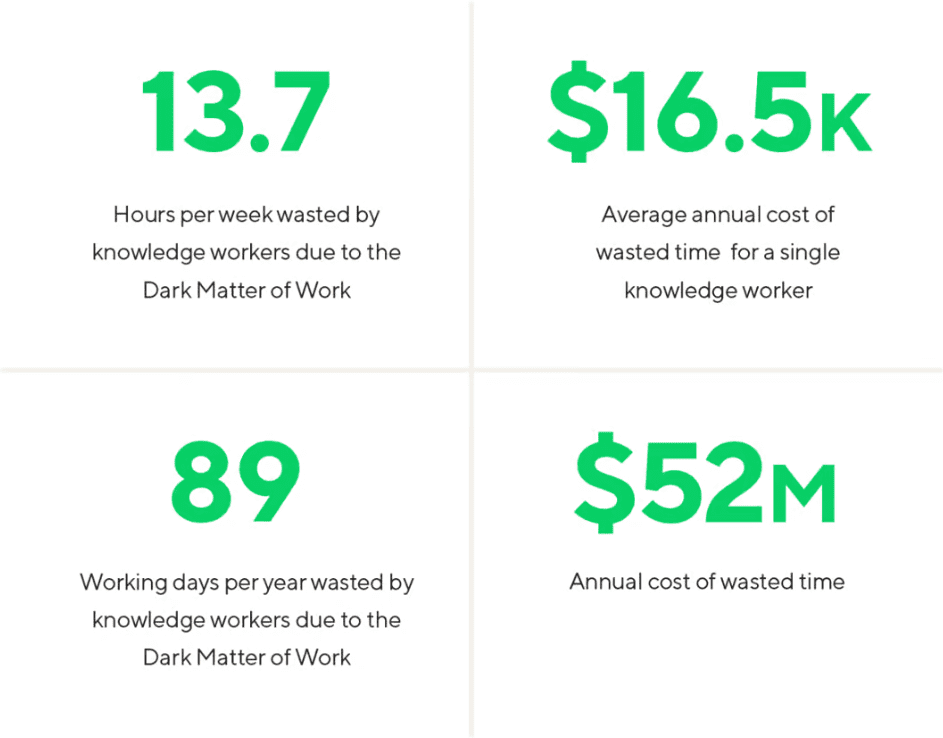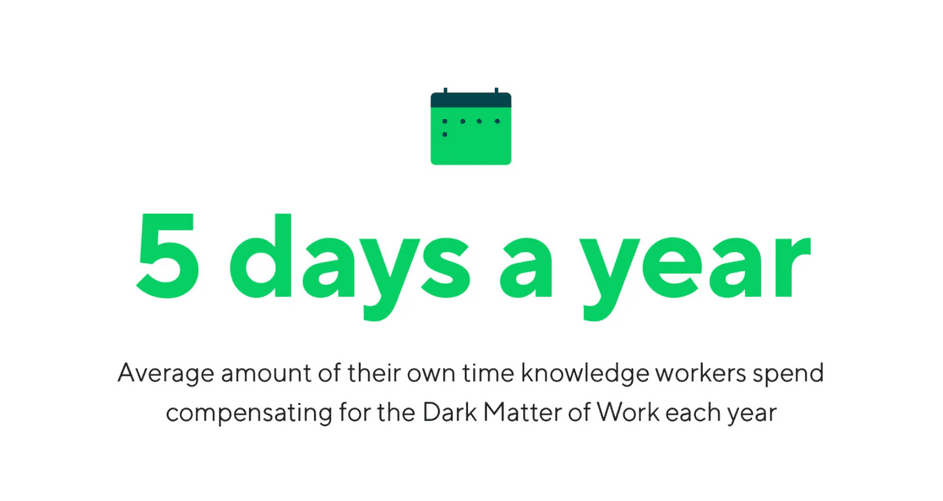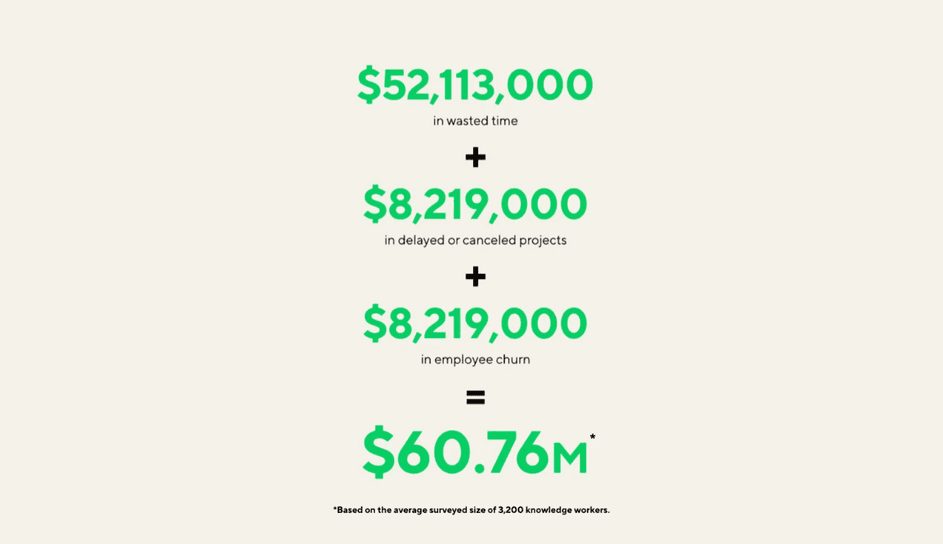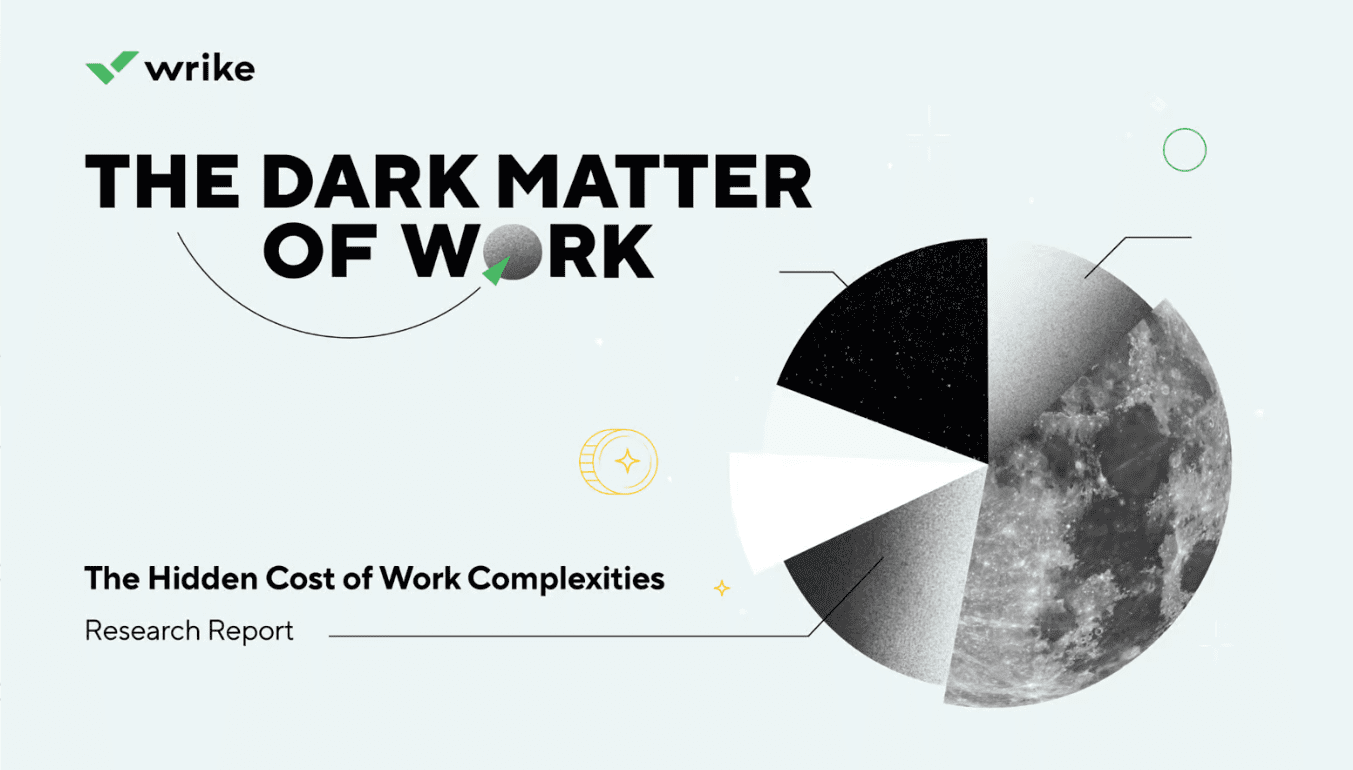Wrike Research report: The Dark Matter of Work
Wrike Blog – 29 June 2022
Author: Andrew Filev, Founder of Wrike
You may not know it yet, but modern work complexities are ripping your organizational efficiency apart. And if “efficiency” isn’t the name of the game right now for business leaders, it’s time to take stock as we move full steam ahead toward a recession.
Over the past few years, modern work complexities have been eating away at your bottom line through an invisible yet powerful presence in your organization — what we call the Dark Matter of Work. Just as CERN identified Dark Matter as the “invisible” content that makes up 95% of the mass of the universe, the Dark Matter of Work represents activity and details that we can’t immediately see but that have a significant influence on everything around it.
There has been an explosion in the complexity of work, from the tools we use to the pace of work to the amount of information processed. Hybrid work has only added to this complexity, and, as a result, employees and business leaders alike find it increasingly difficult to understand work in progress. In the most terrifying instances, they have little to no visibility into work.
My team at Wrike has been enthralled with the Dark Matter of Work and bringing it to light. That’s why we recently dug in and commissioned research to investigate its impact on both business leaders, employees, and organizations as a whole. We wanted to understand to what extent Dark Matter exists and discover the financial cost of Dark Matter affecting us all. The results are staggering and should be a key consideration for all organizations as they try to increase efficiency in preparation for a bumpy economic road ahead.
Let’s dive into what we found.
Impact on Business
While we cannot “see” the Dark Matter of Work, we can identify where it exists. It lives in synchronous applications and unstructured work, such as instant message threads and video calls, as well as the gaps between systems and applications that aren’t integrated. Without a single work platform that is powerful and versatile enough to track, manage, action, and align all work to goals across an organization, there exists a dangerously low level of visibility amongst knowledge workers and leaders.
At present, most business function leaders generally have little visibility into the work their teams are doing and cannot track the progress of much of that work in real time. And if we ask knowledge workers, they say employer visibility into their work is even lower — suggesting there may be more Dark Matter of Work than we think.
Wasted Time
Time wasted on activities such as repeating work that’s already been done, attending unproductive meetings, or following up on actions and statuses costs the average enterprise millions.

The real-time risk paradox
The Dark Matter of Work can also have a significant effect on individual projects. Without a full understanding of work, enterprises cannot anticipate and react to potential risks and are more likely to encounter issues leading to project delay or failure.

Employee exodus
Issues such as repeating work, doing work that turns out to be fruitless, or compensating for a lack of information from colleagues, coupled with increasing stress and burnout, leave many employees unable to cope with work and can cause them to leave.
In fact, at least 22% of knowledge workers are so frustrated by issues, such as repeating work, that it makes them want to quit their jobs. And 37 people left business units since March 2020 after saying they were unable to cope with work, costing their organizations $427,000 in employee churn.

The cost of the dark matter of work
While these are not all the financial costs of Dark Matter, they already amount to tens of millions of dollars a year for businesses. Continued failure to understand and harness the Dark Matter of Work will only add to these costs, as further growth creates greater complexity.

Organizations with 100 employees can lose over $1.65 million annually, and those with 100,000 can lose over $1.65 billion.
Looking ahead
According to the survey, the projected cost of Dark Matter in 2027 looks to be:

How can you understand and harness the Dark Matter of Work? A single source of truth is essential. Enterprises need an approach that is robust enough to manage and orchestrate complex workflows and simple enough for regular employees to use. The organization with full visibility into these workflows and applications and the data they create at all levels will be best equipped to harness the Dark Matter of Work and come out on top.
Access the complete Research report from Wrike, here.



